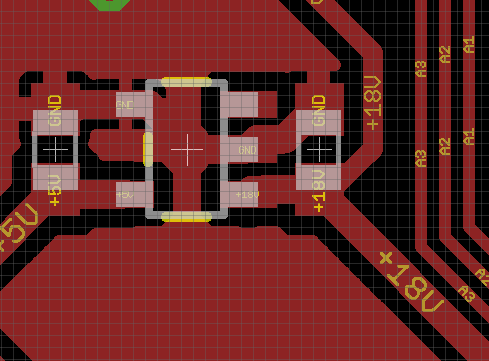Other Parts Discussed in Thread: TPS709
Hi, I'm testing the TPS70950DBVR. Here is the data sheet:
http://www.ti.com/lit/ds/symlink/tps709.pdf
It says it can run from inputs up to 30VDC, but I'm having trouble. I setup a set PCB with the 2 Caps, like in the data sheet, and powered it from a 12VDC bench top power supply (actual reading is 13.8VDC). Using LEDS, I added a load to the output to create about 40mA of draw. It all worked fine. I checked the temperature of the chip using a K-type thermocouple, and it only raised about 5 degree, to 40 degrees celsius.
So then I removed some of the load, so it was only drawing about 18mA, and changed my input voltage to a 18VDC lithium battery pack (actual reading is 20.1VDC) The regulator immediately burnt up. I've done this twice.
My soldering all seems good. I was very careful the second time round to get a good solder reflow.
Can you tell me what the problem is?
Here's a photo of the PCB copper
...and a photo of the chip and caps in place.
Like I said, the load was rather light-just 2 LEDS drawing 18mA total when powered with the 13.8 volts, so there wasn't a lot of load on the regulator. Is it not made for 20 VDC?



